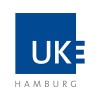
Evaluation of Single-unit Implant-supported Prostheses Survival Using CoCr Prosthetic Abutments:...
Missing TeethProsthesis SurvivalThe aim of the study is to prospectively evaluate the survival of JJGC Cobalt-Chromium (CoCr) prosthetic abutments in single-unit implant-supported prostheses, to confirm the long-term safety and performance of the devices.

Effect of I-Shape Incısıon Technique on Inter-Implant Papilla: A Prospective Randomized Clinical...
Tooth LossBone LossRegenerating a predictable inter-implant papilla is the most complex and challenging aspect of implant dentistry. The aim of the study was to compare the efficacy of I shaped incision technique and conventional midcrestal incision technique for interimplant papilla reconstruction in a 6 month clinical trial.

Gene-activated Bone Substitute for Maxillofacial Bone Regeneration
Bone CystsBone Atrophy4 moreThe purpose of this study is to evaluate the safety and efficacy of the gene-activated bone substitute consisting of octacalcium phosphate and plasmid DNA encoding vascular endothelial growth factor (VEGF) for maxillofacial bone regeneration. The patients with congenital and acquired maxillofacial bone defects and alveolar ridge atrophy will be enrolled.

A Proof of Concept for All-ceramic Zirconia Resin Bonded Bridges for Canine, Premolar and Short...
Missing TeethTrial Design - Objectives and Purpose The aim of this study is to perform a proof of concept for the successful retention and outcome measures of zirconia RBBs for the replacement of missing canine or posterior teeth (6-8mm span) and that they will exhibit similar survival rates (95%) as metal ceramic RBBs over 3 years and short term (Botelho 2006). The use of monolithic extra-coronal zirconia RBBs in the posterior region does not appear to have been reported in the literature (A search pf Pub Med and Google Scholar has not shown any similar studies that have been published - pubmed.gov; Keywords: "zirconia", "resin", "clinical" assessed on 17/10/2015 AND google scholar; Keywords: "zirconia", "resin bonded fixed partial denture", "resin bonded fixed dental prosthesis", "Maryland", "resin bonded bridge" "posterior", "clinical") In addition, currently there appear to be no clinical trials planned or finished in this area (clinicaltrial.gov; Keywords: "zirconia", "resin" assessed on 17/10/2015) using zirconia RBBs in the posterior region. This reveals that there is a gap in the literature on the use of zirconia for replacing posterior teeth with such prostheses. The primary outcome measures would be: success ie. prosthesis retention ie. does not fall out The secondary outcome measures would be: complications of the prosthesis such as tipping, drifting or fracture. patient centered outcomes (satisfaction and oral health related quality of life) on the RBBs The hypothesis is that 2-unit cantilevered zirconia RBBs will be as successful as current data on 2-unit cantilevered metal-ceramic RBBs from this centre and that there will be no difference in the patient centered outcomes. The Primary review appointments will be at 1, 6, 12, 24 and 36 months. However, longer term follow up will be performed and this centre has experience of such long term studies (9.5 years - Botelho 2014). A randomized clinical trial (RCT) comparing to metal-ceramic RBBs will NOT be performed as the 5-year success rate of both metal-ceramic (Botelho 2006) and anterior zirconia (Sasse 2014) prosthesis were higher than 95% and this small differences would mean an unattainable large sample size in an equivalence test (Burns 2001). Significance and implications Zirconia has significant strength and greater stiffness than base metal alloys and displays clinical outcomes comparable to metal-ceramic conventional crowns and bridges (Heintze 2010, Sailer 2007). Well polished zirconia has been observed to have lower wear rates than porcelain (Stober 2014) Zirconia RBBs for posterior tooth replacement will offer an esthetic and biocompatible treatment option to patients over the traditional ceramic-metal RBBs. It is anticipated that patient demand for this would be high as these prostheses should be as successful (retentive). These results would re-write established dental prosthodontics textbooks and this would be the first centre to report on the routine use of a 2-unit extracoronal all-zirconia RBB for the replacement of missing posterior teeth. Research plan and methodology The sample pool would be obtained from patients presenting at the Prince Philip Dental Hospital, University of Hong Kong and who request and need replacement of one or more missing teeth.. They will be clinically assessed for eligibility and invited to participate with written consent in the study. After treatment they will be reviewed up to a 3rd year endpoint of the study. Further review beyond this will be undertaken.

Ridge Preservation With Putty Allografts
Tooth LossThe study will consist of randomized controlled clinical study trial comparing the results of a demineralized putty allorgraft versus a combined mineralized/demineralized putty allograft in approximately 30 patients, 15 per group. All materials used in the study are FDA approved.

Short Implants in Edentulous Mandible
Tooth LossEdentulous JawMain aim of this study was to assess survival rates of short implants with a length of 4 mm in the edentulous mandible after 1, 3, and 5 years.

OHQoL With Removable Partial Dentures; a Pilot Study
Missing TeethPartial EdentulismRemovable false teeth (called removable partial dentures (RPDs)) are commonly made for people with missing teeth. RPDs are made out of a framework and the replacement teeth/gum. The framework sits on the teeth and the gums and can be made out of different materials, metal or non-metal, with different properties. The plastic teeth and gum sit on the framework. A common framework material is cobalt chromium, a rigid, non-precious metal alloy. Other framework materials include titanium and non-metal materials such as medical grade polyetheretherketone (PEEK). A review of the literature shows that no research has been reported investigating how different RPD framework materials impact on a person's oral health related quality of life (OHQoL). The sensation that different frameworks have in the mouth can be quite varied between people, and it would be relevant to be able to tell patients which type of framework is better tolerated based on research evidence. We hope to conduct an un-blinded randomised crossover pilot trial investigating the difference in patient preference and oral health related quality of life measured by patient centred outcomes in a group of patients due to receive tooth supported removable partial dentures at the Charles Clifford Dental Hospital.

Healing of Post-ext Sites Using Bovine Bone Mineral: a CBCT and Histologic RCCT
Loss of Teeth Due to ExtractionEdentulous Alveolar RidgeAim of the present investigation will be to evaluate the role of a bovine-bone mineral and a collagen membrane as ridge augmentation procedure following tooth extraction. 20 consecutive adult patients, requiring tooth extraction in the frontal area of the upper and lower arch maxilla (from second premolar to second premolar), will be enrolled into the study. After tooth extraction, sockets will be randomized and divided into two groups: in Group A the socket will be grafted with Bio-Oss Collagen , in Group B the sockets will be grafted with BioOss granules (small granules). The graft will be covered with porcine collagen membrane (BioGide). Then, the flap will be sutured. MEASUREMENTS: The end of the study will be fixed at the 6 months evaluation after tooth extraction. Impression will be taken before tooth extraction and after 6 months in order to create cast models. On the cast models, using reference PVC (polyvinylchloride) guides, the horizontal dimension of the soft tissues will be measured. One measurement per tooth will be recorded, at T0 (before extraction) and T2 (after 6 months). A 3D radiological image, using the CBCT technique, will be obtained at the end of the surgical stage T1 (extraction + bone graft) and after 6 months of healing. Superimposition will be performed in order to measure hard tissue remodelling. After six months (T6), a a biopsy specimen will be also harvested for that augmented extractions sockets on which an implant installation has been previously planned.

Maxillary Sinus Elevation With Bio-Oss or Straumann BoneCeramic
Teeth LossBone LossThe purpose of the study was to test a clinically relevant non-inferiority of Straumann BoneCeramic treatment compared to Bio-Oss treatment 180 to 240 days after sinus grafting procedure.

Radiographic and the Esthetic Outcome of Two Different Bone Grafting Techniques in Early Implant...
Missing ToothFractured ToothTotal of 48 subjects were randomly assigned to treatment groups: UT Health Science Center at San Antonio Chi Mei Medical Center, Tainan, Taiwan Patients require a maxillary non-molar extraction site that is planned to be replaced by a dental implant and crown. This includes Straumann BL SLActive: Narrow (3.3mm) & Regular (4.1mm) Crossfit implants in all available lengths. Patients were randomly selected to receive either FDBA (test) or Autogenous bone + DBBM (control/standard) for contour augmentation.
